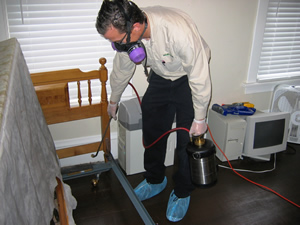Reliable A1 Bed Bug Treatment Houston - Remove Bed Vermin
Reliable A1 Bed Bug Treatment Houston - Remove Bed Vermin
Blog Article
Understanding the Lifecycle of Parasites for Targeted Control Techniques
Understanding the lifecycle of insects is an essential facet of reliable insect administration approaches. Via a much deeper understanding of exactly how insects progress and grow, tailored control strategies can be created to attend to certain points in their lifecycle, ultimately leading to even more successful insect monitoring outcomes.
Importance of Comprehending Pest Lifecycle
Recognizing the lifecycle of parasites is crucial for establishing reliable and targeted control strategies in bug administration. By comprehending the numerous stages a parasite goes via from egg to grownup, pest control experts can determine vulnerable factors in the lifecycle where treatment can be most successful. Understanding when larvae are most energetic can assist establish the optimal timing for using larvicides. Additionally, recognizing the lifespan of a bug types can assist in anticipating population growth patterns and possible infestation threats.
Moreover, recognizing the certain environmental conditions necessary for every phase of the parasite's lifecycle can guide choices on habitat modification or exclusion methods to decrease and disrupt the lifecycle parasite populaces. This understanding allows pest management professionals to apply positive procedures rather than relying solely on responsive therapies, leading to even more lasting and lasting pest control services. Ultimately, an extensive understanding of pest lifecycles encourages bug control experts to customize their methods efficiently, minimizing ecological impacts and taking full advantage of control results.
Key Stages in Pest Advancement
To effectively implement targeted control methods in pest administration, a vital facet depends on thoroughly recognizing and recognizing the key phases in pest development. Insect advancement typically contains several essential phases that are critical for their lifecycle and monitoring. The first stage is the egg stage, where bugs lay eggs that later on hatch out right into larvae. Larvae after that progress into pupae, a stage where they go through metamorphosis before becoming grown-up bugs. Recognizing these stages is crucial as it helps in pinpointing weak spots in the lifecycle where control actions can be most effective.

Vulnerabilities in Pest Lifecycle
Throughout the numerous stages of a parasite's lifecycle, unique susceptabilities emerge that can be strategically targeted for reliable control steps. One vital vulnerability hinges on the egg phase, where parasites are commonly more prone to particular insecticides or organic control representatives due to their soft outer covering, making them much easier targets for treatment. In addition, the nymph or larval phase presents vulnerabilities as insects go through quick growth and development, needing high power intake that can be manipulated by interrupting their food sources or introducing growth inhibitors. Pupal stages, defined by stability and makeover, use a home window for targeted control through physical barriers or details therapies that prevent effective emergence. Grown-up pests, while much more durable due to their reproductive capacity, can still be susceptible throughout mating or egg-laying tasks, which can be interrupted via pheromone catches or sterilization methods. Understanding these susceptabilities in the parasite lifecycle is vital for developing effective and precise control techniques that successfully manage parasite populations while minimizing ecological impact.
Carrying Out Targeted Control Measures

Implementing targeted control actions generally includes a multi-faceted approach. This might include environment modification to make the atmosphere less welcoming to parasites, such as getting rid of standing water for insect control or sealing entrance points for rats. Furthermore, biological control approaches can be click to investigate made use of, where natural killers or microorganisms are presented to keep parasite populations in check.
Chemical control, such as the cautious application of chemicals, is an additional common approach. It is essential to make use of these substances deliberately to lessen environmental impact and potential damage to non-target varieties - A1 bed bug removal houston. Integrated Insect Management (IPM) approaches that combine different control procedures in a worked with and lasting fashion are frequently one of the most efficient in accomplishing lasting insect monitoring goals. By executing targeted control steps based on a detailed understanding of pest lifecycles, insect populaces can be successfully managed while minimizing risks to human wellness and the environment.
Enhanced Bug Management Practices

Furthermore, the unification of biological control representatives, such as all-natural predators or virus of parasites, can help in reducing dependence on chemical pesticides and advertise a much more well balanced community. Carrying out physical obstacles and catches can likewise belong to boosted bug management techniques, using non-toxic and targeted remedies for bug control. Furthermore, the use of pheromones and other semiochemicals can interfere with pest mating check my site patterns and communication, bring about decreased parasite populaces gradually.
Final Thought
By recognizing essential stages in bug advancement and vulnerabilities in their lifecycle, targeted control measures can be applied to lessen pest populaces. Improved parasite management methods can assist minimize the reliance on broad-spectrum chemicals and advertise more lasting and ecologically friendly pest control approaches.
Comprehending the lifecycle of parasites is vital for developing reliable and targeted control strategies in insect monitoring. By comprehending the different phases a bug goes via from egg to adult, pest control specialists can recognize at risk factors in the lifecycle where intervention can be most effective. Ultimately, a comprehensive understanding of pest lifecycles empowers bug control specialists to tailor their approaches properly, lessening environmental impacts and optimizing control end results.
By executing targeted control procedures based on a complete understanding of insect lifecycles, parasite populaces can be efficiently controlled while decreasing risks to human wellness and the atmosphere.
By determining essential phases in useful site pest advancement and vulnerabilities in their lifecycle, targeted control steps can be implemented to lessen pest populaces.
Report this page